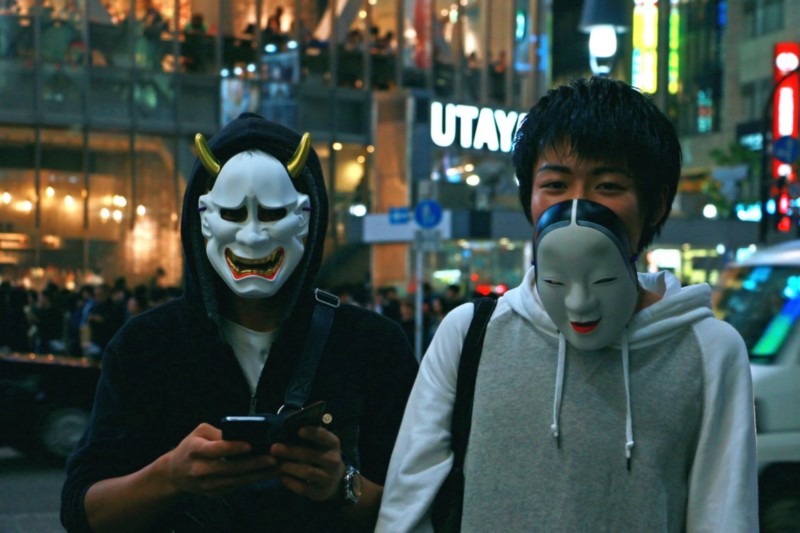The arena is Tokyo, Japan, the style-savvy information capital of the world. In this media-driven society, the hot topic of the morning news can quickly become the hot gossip of the entire country. This being so, stars may have it rougher than it seems as they try to keep up appearances in the daily grind of this media pressure cooker called Tokyo.
Considering stardom, today’s definition of what it means to be “famous” has become blurred. Within Japanese society, heavily separated by style, age group, and career, some individuals considered to be “stars” in the eyes of one may be completely unknown to the person sitting right next to you on the train.
Recently a new breed of star has emerged in Japan: the young and aspiring sports professional. Naoki Yamada (18) of Japan’s pro soccer team, Yuki Saito (19, The Handkerchief Prince) of Waseda University’s varsity baseball team, and Ryo Ishikawa (17), now an internationally recognized golf prodigy are a few of the recent big names in Japanese sports media. These individuals, while experiencing a type of stardom with more international access than possibly an up and coming singer/actor, also face pressures. They are expected to perform as leaders in their particular sports, and to adhere to the same academic standards, etc. of other Japanese individuals in this academically rigid society. As professional athletes, their age does not shield them from the criticism of the media if they are not able to perform at the same level as their teammates. For example, during a 2008 game against Meiji University, the Handkerchief Prince Yuki Saito was hit in the thigh by a line drive. He subsequently could not continue pitching that game, and Waseda lost the match. The Japanese media proceeded to blame Saito for the loss, despite the inevitability of the event. For a young star, pressure such as this can be a difficult thing to deal with at times. In the classroom as well as on the field, the push towards perfection by the Japanese public is enough to make some students/athletes break down. In Saito’s case, his evolution from pitcher to “The Handkerchief Prince”, evolved through mass media proliferation like a popular TV drama, with fans waiting to watch his next “episode”.
Next, Japan is host to a slew of traditional media figures, product spokespeople, singers, actors, etc. One face which has been seen quite often as of late is Haruka Kawaguchi. She is the newest “Pokari Beauty” face for Otsuka Pharmaceutical sports drink Pokari Sweat. This is an extremely sought-after position in the Japanese model/talent industry. In the face of mounting pressure to succeed as the newest Pokari representative to this product’s loyal following, Haruka expresses fear about being able to live up to public/personal expectations.
Lastly, idol and S.M.A.P. member Tsuyoshi Kusanagi has finally fallen back into favor with the Japanese public after having his reputation almost destroyed due to a minor run-in with the law over a case of drunken public nudity. Within Japan, the importance of “sekinin” or personal responsibility is not taken lightly, and whether it is in drama, movies, or real life this societal trait is blatantly obvious. Thus, a common theme in many movies, etc. involves an individual who turns over a new leaf in light of some type of internal/external struggle or overcoming a difficult problem. Kusanagi-kun can be seen subjected to this type of “assumed succession of events” on his way from becoming immoral and foolish in the eyes of the media to a reformed and fame-worthy individual once again. After being suspended from S.M.A.P., confined to his residence, and then made to apologize and admit to having personal problems on national TV, Kusanagi-kun has apparently earned his forgiveness in the eye of the media. While the Japanese press ruthlessly attacked Kusanagi for this offense, countless occurrences such as this occur daily and go unnoticed, or worse, unpunished. This “pick and choose” attitude of Japanese media keeps stars treading softly and saving face as they operate more as tools to be manipulated by media and society rather than as individuals allowed to influence society.
There are many faces in the world of the Japanese media. Various mediums, countless venues, and an amassing of millions of endlessly circulated opinions daily shape the way we view individuals and popular culture in this technology-driven society. We would do best to consider the individual in certain cases, before letting the media drive our opinions and the masses in what seems to be at times a herding of sheep, and at times a slaughter of lambs.
1st June 2010
CarterJMRN is a strategic market research agency that has been helping clients with consumers and businesses in Japan and beyond since 1989.
We believe that, although the terrain you face in building a successful marketing strategy and activation path sometimes seems obscure, the path to success is knowable and that the consumer is the guide who will show you the way.
Find out more and get in touch on our site

